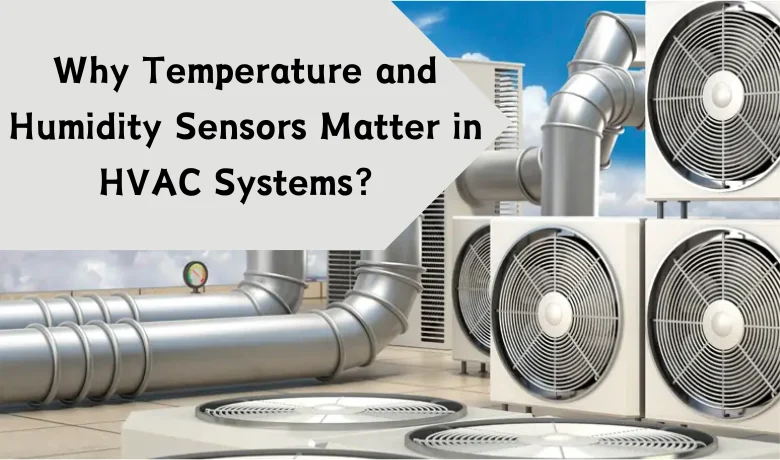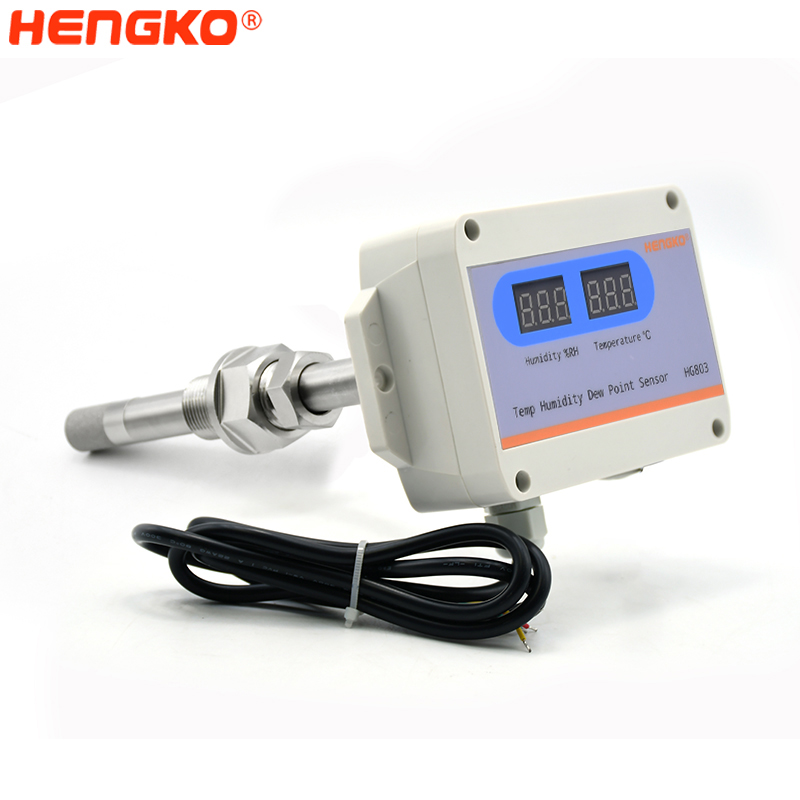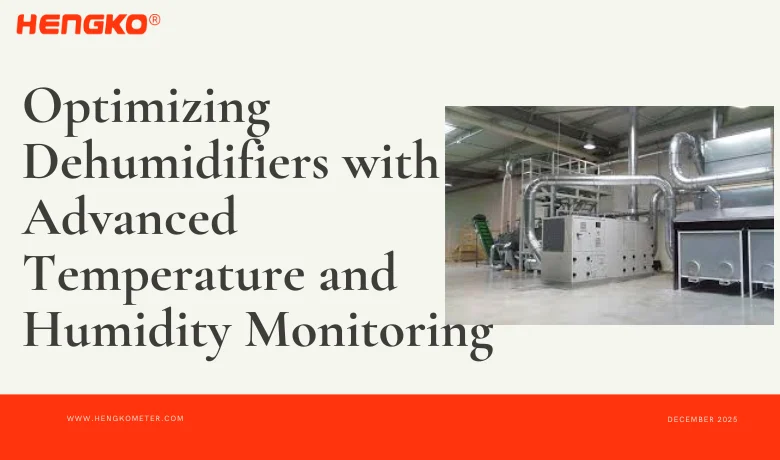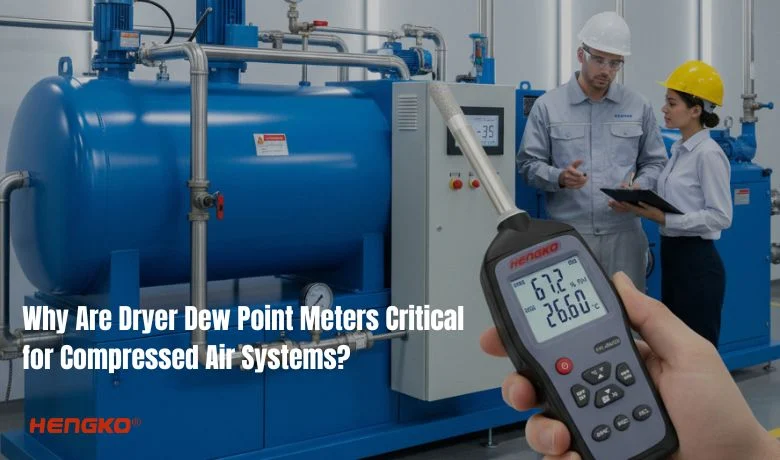In today’s fast-paced world, maintaining a comfortable indoor environment is crucial for residential, commercial, and industrial spaces. The foundation of this comfort lies in efficient heating, ventilation, and air conditioning (HVAC) systems.
Among the many components that contribute to HVAC effectiveness, temperature and humidity sensors play a pivotal role. In This article we explores why these sensors are essential for HVAC systems?
Hope those information will be helpful for your understand more about Humidity Monitor Technology the HVAC System.
Understanding HVAC systems and Temperature and Humidity Sensors
*HVAC systems are designed to control the temperature, humidity, and air quality within a space. They ensure that indoor environments are comfortable, healthy, and conducive to productivity. However, achieving this requires accurate monitoring and control of environmental conditions.
*Temperature and humidity sensors are devices that measure the ambient temperature and humidity levels in a given environment. These sensors can be found in various forms, such as capacitive, resistive, or thermocouple sensors.
*Temperature and humidity sensors play a crucial role in HVAC (Heating, Ventilation, and Air Conditioning) systems. They provide real-time data that is essential for the effective operation of HVAC systems. By accurately measuring the indoor climate, these sensors enable HVAC systems to respond promptly to changes in environmental conditions.

Applications of Temperature and Humidity Sensors in HVAC systems
Humidity transmitters are used in HVAC systems to measure and control the humidity levels in various environments. Here are some of the most common applications for humidity transmitters in HVAC systems:
1.Industry
*Manufacturing:
Humidity control is essential in many manufacturing processes, such as food processing, pharmaceutical production, and electronics manufacturing. Humidity transmitters can be used to monitor and control the humidity levels in production areas, storage facilities, and shipping containers.
*Data centers:
Humidity transmitters are utilized to maintain precise humidity levels to protect equipment from damage in date centers. They help to monitor and regulate humidity , safeguarding the equipment from excess moisture.
*Warehouses:
Warehouses must also maintain a specific humidity level to prevent damage to stored goods. Humidity transmitters can monitor and control the humidity levels in warehouses, ensuring that products are protected from moisture.
2.Commercial
*Office Buildings:
To promote employee productivity, office buildings need to maintain a comfortable humidity level. Humidity transmitters can effectively monitor and control these levels, ensuring a healthy and pleasant work environment.
*Retail Stores:
Retail stores must maintain a comfortable humidity level to enhance customer satisfaction. Humidity transmitters can be employed to monitor and regulate humidity, keeping customers comfortable while protecting products from excess moisture.
3.Medical:
*Hospitals:
To safeguard against infection, hospitals must keep specific humidity levels. Monitoring and regulating these levels with humidity transmitters protects both patients and staff.
*Produkcja farmaceutyczna:
Ensuring product safety and effectiveness in pharmaceutical manufacturing requires precise humidity control. Humidity transmitters play a key role in maintaining these critical conditions.
The benefit of Temperature and Humidity Sensors in HVAC systems
*Precise Monitoring:
Temperature and humidity sensors contribute significantly to maintaining comfort levels and improving indoor air quality, making them essential components of effective HVAC management. They provide accurate data feedback, enabling systems to optimize performance and enhance energy efficiency. These sensors can also identify potential faults, allowing for timely alerts to prevent equipment damage. In specialized settings, such as museums or laboratories, they ensure that conditions remain within strict parameters to protect sensitive items.
*Automated Control Adjustments:
When the sensors detect that the temperature or humidity levels deviate from the desired setpoints, they signal the HVAC system to make adjustments. For example, in food processing plants, maintaining strict temperature and humidity levels is critical for product quality and safety. During production, the sensors continuously monitor the environment. When humidity exceeds the acceptable range, the sensors automatically signal the HVAC system to activate additional ventilation and dehumidificati on units. This automated adjustment helps maintain optimal conditions for food preservation and safety, preventing spoilage and ensuring compliance with health regulations
*Energy Efficiency:
By optimizing system performance based on accurate data, they reduce unnecessary energy consumption, leading to lower bills and extending the lifespan of HVAC equipment. This combination of comfort and efficiency makes these sensors essential for modern HVAC systems.
How to choose Temperature and Humidity Sensors for HVAC systems?
1.Measurement Range:
Select sensors that cover the required temperature and humidity range for your specific application, ensuring they can accurately capture the necessary environmental conditions.
2.Accuracy and Stability:
Measurement accuracy is the most important indicator for temperature and humidity transmitters. Different accuracy lead to varying manufacturing costs and expenses. HVAC systems in building automation typically do not have very high accuracy demands, while in certain special environments, such as museums and archives, require precise temperature and humidity transmitters to ensure the quality of stored items.
3.Environmental Adaptability:
Choose sensors that can withstand the environmental conditions of the installation site, including factors like dust, moisture, and temperature fluctuations.
4.Response Time:
Consider the response time of the sensors; faster response times ensure quick adjustments in HVAC systems, improving comfort and efficiency.
5.Installation Method:
In HVAC systems, temperature and humidity sensors are distributed both in ducts and indoors. For ducts, duct-mounted transmitters should be chosen, while wall-mounted transmitters are suitable for indoor use. Additionally, factors such as installation size and ease of installation must also be considered.
Wnioski
After check those information, You can know that Temperature and humidity sensors are integral to the efficiency and effectiveness of HVAC systems.
By providing accurate, real-time data, these sensors enable systems to adapt to changing environmental conditions, enhancing comfort while minimizing energy consumption.
Also As the demand for efficient and sustainable building management continues to grow, the importance of these sensors in HVAC applications will only increase, making them essential tools for achieving optimal indoor environments.
Why Choose HENGKO Humidity Transmitter to Monitor Your HVAC System ?
HENGKO’s temperature and humidity sensors offer exceptional performance, reliability, and durability, making them ideal for HVAC system monitoring. Here’s why:
*High Precision & Resolution: Ensure accurate and reliable readings.
*Fast Response Time: Quickly adapts to environmental changes.
*Strong Reliability & Repeatability: Consistent performance in varying conditions.
*Durable & Long-Term Stability: Built to last, resistant to wear and tear.
*Contamination Resistance: Designed to function in challenging environments.
For more information on how our sensors can meet your needs, contact us at sales@hengkometer.com.
We’re here to help you find the best solution!







